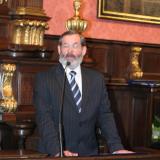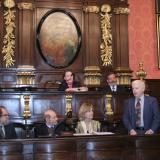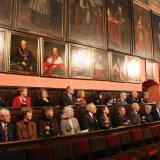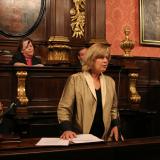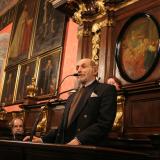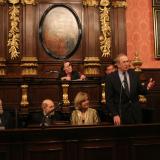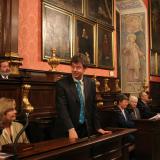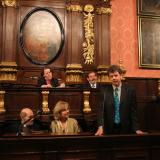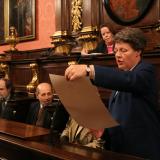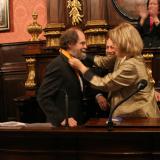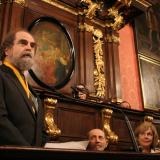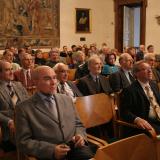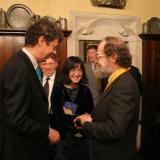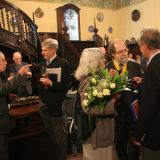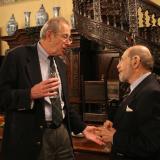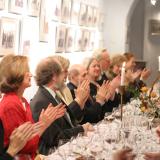2005 Gruber Cosmology Prize
Dr. James E. Gunn is a distinguished contributor to all three of the main areas of astronomy research – theory, observation, and instrumentation. Dr. Gunn led the design of a digital-based camera for the Hubble Space Telescope and came up with the original concept for the Sloan Digital Sky Survey (SDSS). He also designed and built the camera needed for the SDSS, which presents a three-dimensional mapping of a large part of the universe.
2005 Cosmology Prize Recipient
Laureate Profile
Film is dead – digital cameras have taken over. But in the 1970s the idea of putting a small light-sensitive silicon wafer on the end of your telescope was, if not crazy, at least adventurous.
James Gunn led the design of just such a silicon-based camera for the Hubble Space Telescope. It has given us the many beautiful and remarkable images that have cemented public and scientific respect for Hubble.
Then he had the original concept for the Sloan Digital Sky Survey (SDSS) — the most ambitious astronomical survey project ever undertaken. The survey is mapping in detail one-quarter of the entire sky, determining the positions and absolute brightness of more than 100 million celestial objects. SDSS II was announced in July 2005 and will focus on the structure and origins of the Milky Way Galaxy and the nature of dark energy.
"All that we see in the sky — stars, planets, galaxies and so on — turns out to be just 4% of the Universe," says Gunn. "About 23 per cent is dark matter. The remaining 70% is dark energy, which we know next to nothing about. That's a big gap in our understanding of the Universe."
"The Sky Survey will tell us which of our theories are right — or whether we have to come up with entirely new ideas," he says.
Since receiving the prize Gunn has been mostly working on dotting i's and crossing t's for the survey--improving the accuracy of the analysis for much better brightnesses, redshifts, and spectra, the last aiming at being able to do accurate chemical analyses and get accurate velocities of stars as part of the Galactic structure program. Since all the elements heavier than helium are made in stars, studying the chemical makeup of stars of different ages provides a kind of history book of the formation processes which made the Galaxy.
He is also busy designing an fundraising for a new survey aimed in part at producing much the most accurate results for dark energy from measuring accurately the expansion history of the universe.
Citation
The Cosmology Prize of The Peter Gruber Foundation is hereby proudly presented to Professor James Gunn, Princeton University Observatory, for his central contributions to the theoretical, observational and instrumental development of modern cosmology.
From his pioneering early work on the intergalactic medium and on gravitational lensing, through his use of new technology to study distant objects with the world's largest telescopes, to his design of the instruments used to carry out definitive cosmological surveys both from the ground and from space, he has set the highest standards for the field and provided the ideas and the data to inspire new generations of cosmologists.




